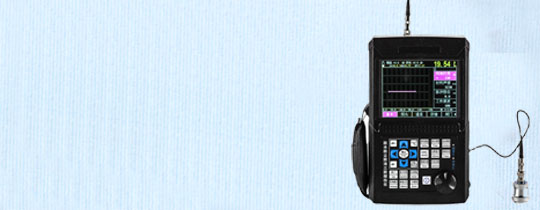
Magnetic proximity switch FBK-II, FBK-2
Magnetic proximity switches FBK-II and FBK-2 are mainly used in places with sexual mixtures of IIA, IIB, and IIC, groups T1 to T6, marked as ExmbIIT6Gb. Switches used in hazardous areas such as petroleum, chemical, and coal mines.
- ZHUOXIN
- 24v-110v-220v-380v
- IP65
- TT, Paypal, Credit card, Western union
- +86-15163766288
- Magnetic proximity switches FBK-II and FBK-2 are mainly used in places with sexual mixtures of IIA, IIB, and IIC, groups T1 to T6, marked as ExmbIIT6Gb. Switches used in hazardous areas such as petroleum, chemical, and coal mines.
Description

Magnetic proximity switch FBK-II, FBK-2 magnetic proximity switch FBK-II, FBK-2 is mainly used in places with sexual mixtures IIA, IIB, IIC, T1 to T6 groups, marked as ExmbIIT6Gb. Switches used in hazardous areas such as petroleum, chemical, and coal mines. The working principle of FBK-1, FBK-2, FBK-3, and BKG-II magnetic proximity switches FBK series switches is composed of a reed tube, magnetic steel, and a casing, which opens and closes the circuit under the drive of an external magnetic field. The schematic diagram of the FBK-3J switch is shown in Figure 1. When the external magnet moves downwards through point A to position B, the polarity of the external magnet is the same as that of the switch itself, and the magnetic force adds up to close the normally open contact. When the external magnet continues to descend to the C position, the external magnetic force on the switch decreases, but the contact still maintains the action (closed conduction) state through its own magnetic force, achieving memory. When the external magnet moves up from position B to position A, the polarity of the external magnet is opposite to that of the magnet on the switch. The magnetic force decreases and the contact returns. The operating principle of FBK-3 switch is shown in Figure 2. When the external magnet approaches point A, the tongue spring tube generates opposite polarity N and S poles at the free end under the action of the magnetic field. The magnet continues to approach, and when the two magnetic forces reach a certain value, the moving piece overcomes its own reaction force, and the contact acts (attracts and conducts). When the magnet leaves point A to point B, the magnetic force decreases and the contact returns (opens). FBK - □ J is memory type, while FBK - □ is non memory type< FBK - □ J memory type, as shown in Figure 1, the magnetic steel N-pole makes the switch close, and the S-pole opens the switch. That is to say, when the magnet approaches the switch, the switch is engaged; When the magnet continues to move forward and leaves the switch, the switch remains engaged. When the magnet returns through the switch, the switch opens. Magnetic proximity switches FBK-1, FBK-2, FBK-3, BGK-II, CJK-1Z/T, CKG-1Z, CKG-1C, CKG-2Z, CKG-2C, CKG-3Z, CKG-3C, CJK-1Z/T, CKG-1Z, CKG-1C, CKG-2Z, CKG-2C, CJK-1Z/T, CKG-1Z, CKG-1C, CKG-2Z,
CKG-2C, CKG-3Z, CKG-3C, CJK-3Z-K, CJK-32-K/T, CJK-32- K/T, CJK-3Z/K/T,
CJK-32/K/T, CJK-3Z-K/T, CJK-32-K/T, CJK-1C, CJK-2C, CJK-3C, CJK-4C, CJK-5C
FBK - □ Non memory type. When approaching the switch, the switch is engaged. When the magnet leaves the switch, the switch opens< FBK - □ Non memory type and FBK - □ J memory type can both be made into temperature type proximity switches. The temperature can reach 300 degrees. The BK-A proximity switch is a series of products. According to the different models of tongue reeds used, they are classified as FBK-1; FBK-2; FBK-3 and other products. The purpose is to adapt to different external sizes, as well as different connection points and contact capacities. Its external dimensions are shown on the drawings. But external dimensions can also be customized according to user requirements to facilitate installation and use. But the assembly process and technical specifications of its switch remain unchanged< br/>
CKG-2C, CKG-3Z, CKG-3C, CJK-3Z-K, CJK-32-K/T, CJK-32- K/T, CJK-3Z/K/T,
CJK-32/K/T, CJK-3Z-K/T, CJK-32-K/T, CJK-1C, CJK-2C, CJK-3C, CJK-4C, CJK-5C
FBK - □ Non memory type. When approaching the switch, the switch is engaged. When the magnet leaves the switch, the switch opens< FBK - □ Non memory type and FBK - □ J memory type can both be made into temperature type proximity switches. The temperature can reach 300 degrees. The BK-A proximity switch is a series of products. According to the different models of tongue reeds used, they are classified as FBK-1; FBK-2; FBK-3 and other products. The purpose is to adapt to different external sizes, as well as different connection points and contact capacities. Its external dimensions are shown on the drawings. But external dimensions can also be customized according to user requirements to facilitate installation and use. But the assembly process and technical specifications of its switch remain unchanged< br/>
Tags
Get the latest price? We'll respond as soon as possible(within 12 hours)

















